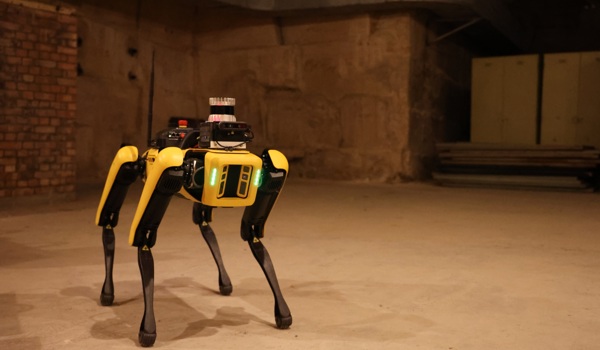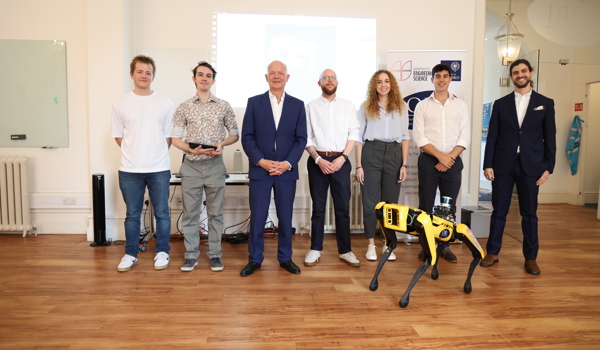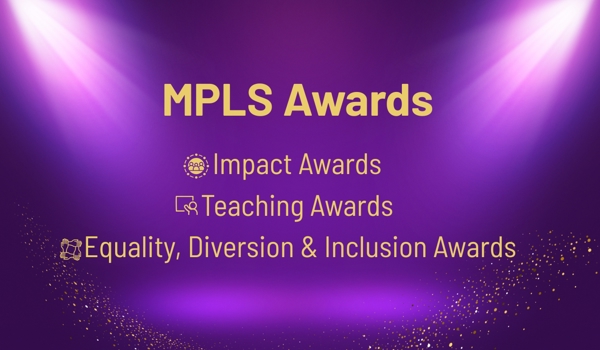19 Nov 2019
ORCA Demo – October 2018
Oxford Robotics Institute is part of two Research Hubs which focus on robotics and artificial intelligence (AI) that can be deployed in extreme environments. The hubs, both funded by UK Research and Innovation as part of the UK’s Industrial Strategy Challenge Fund, are ORCA, targeting applications for the offshore oil and gas industry, and RAIN, targeting applications in the nuclear industry.
Central to these hubs is the translation of research results into industry-led use cases, and, more generally, the transfer of advanced robotics and AI knowledge into UK industry. As part of this agenda, on 29th October 2018 ORI helped lead a demonstration day for the ORCA Hub at the Fire Service College in Gloucestershire. The site hosts a number of test sites, usually used to train fire fighters, but for this event it was taken over by robots to see if our technology was able to perform a range of tasks far away from controlled lab conditions. As appropriate for research targeting offshore oil and gas, our demonstrations took place on an oil rig mockup, complete with fire damaged living compartments, a variety of storage vessels, and treacherous surfaces. The event was attended by representatives from the oil and gas industries and EPSRC.
The ORI demonstrations focused on showcasing our ORCA- and RAIN-funded research around autonomous systems for industrial inspection and monitoring. For this we are developing technology to provide robust autonomous navigation and localisation across a variety of extreme environments, and also perceptual capabilities for long-term structural monitoring and change detection.
In the first demonstration Ioannis Havoutis showcased DRS’s research on legged mobility for inspection. This was done using the ANYmal quadruped robot and DRS’s home-developed remote operation software stack, that allows the operator to supervise the progress of the mission and plan the robot’s next actions. The robot started at a distance to the oil rig and demonstrated its ability to localise its position relative to a prior 3D model of the environment using LIDAR. After this, ANYmal was asked to reach a target area within the oil rig. First, it navigated through the main corridor and over patches of uneven tarmac. Then, the robot needed to overcome a 25cm separating barrier. We took advantage of ANYmal’s very large range of motion to invert its leg configuration and to traverse the barrier. The quadruped then navigated to an industrial staircase, using a speedy trotting gait and climbed the steps up using a walking gait called FreeGait. Once it reached the landing it entered the facility and explored the connected rooms.

Following this Nick Hawes presented results from across the ORI on long-term inspection from ground vehicles. The first inspection demonstration showcased teach-and-repeat navigation and 3D reconstruction from a Clearpath Husky platform. The robot was first “taught” a path through the environment (in this case the first floor of the oil rig) and was then shown to be able to accurately “repeat” this path autonomously. On each repetition the robot stopped by a collection of objects to perform a lidar and RGB scan. Between scans these objects were altered, and change detection was used to automatically highlight the differences in appearance.
The second inspection demonstration presented research specific to the RAIN Hub on radiation-aware mission planning. This demonstration had a Clearpath Jackal autonomously navigating around the ground floor of the oil rig, visiting a collection of user-defined inspection targets whilst trying to minimise exposure to a collection of (simulated) radioactive sources. We demonstrated how multi-objective probabilistic model checking could be used to bound the robot’s radiation exposure whilst also maximising the number of inspection targets it visited.
The event also featured demonstrations of cutting edge robotics and AI from Heriot-Watt, Edinburgh, Imperial and Liverpool. Each group rose to the challenge of presenting their work in unfamiliar conditions, and early feedback from industrial partners has been extremely positive.
You can also watch a Facebook Live stream of some of our preparation, and follow #ORCAHubDemos.




